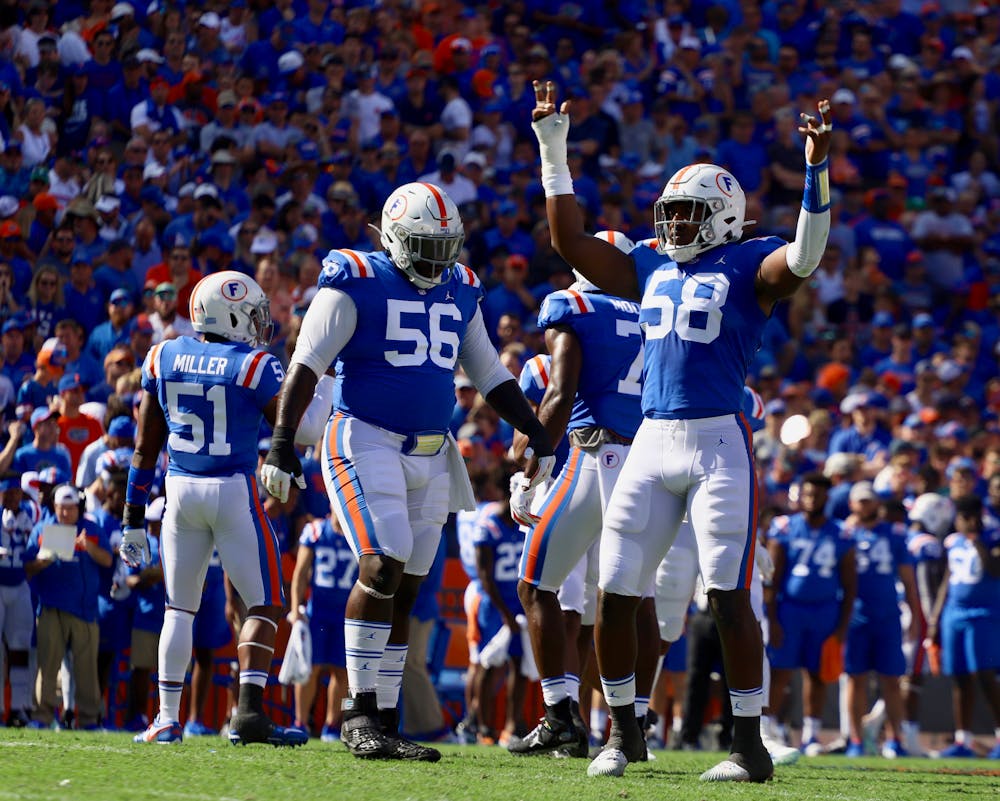Todd Grantham had a reputation when he was hired as Florida’s new defensive coordinator in 2018.
Whenever anyone tries to discuss a Grantham-led defense, usually the first thing that comes to mind is “Third and Grantham.” Grantham, who previously held that position at Mississippi State, Louisville and Georgia, is known for his aggressive defenses, which can sometimes result in the opposing team converting on third and long.
My esteemed colleague Tyler Nettuno took a look at this a year ago and came to the conclusion that the “Third and Grantham” issue was mostly a myth.
He wrote, “Grantham’s defensive philosophy doesn’t inhibit the team’s success. If anything, it probably works to Florida’s advantage.”
Let’s take a look at it one year later.
First, let’s define “Third and Grantham.” I consulted a few alligatorSports writers and scoured college football forums to come to a concise definition:
An instance of “Third and Grantham” is any time where the opposition gets a first down on third and long.
Next, how many yards are our third-and-long’s going to be? This Football Outsiders article defines third and long as at least eight yards, and that’s good enough for me. It’s far enough to be a pretty long third down while still being close enough to collect as many attempts as possible.
Here is every third down the Gators faced last season against FBS teams outside of garbage time (plays where the win probability isn’t between 15 and 85 percent) and how many yards their opponent gained on that play.
The yellow line is the first down marker, so anything that is on or above the yellow line resulted in a first down for Florida’s opponents. Note that this also doesn’t count any third downs converted via penalties.
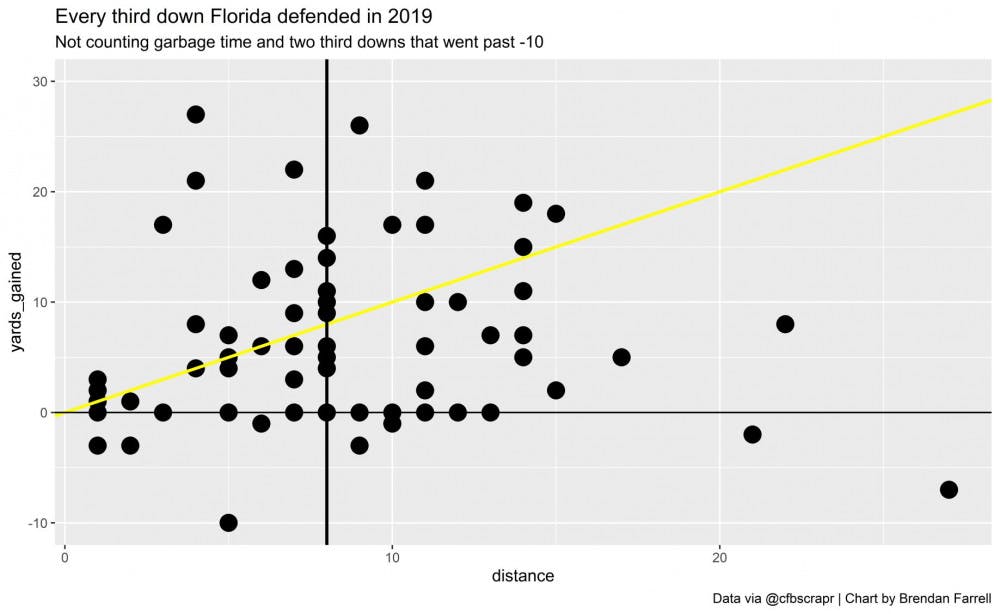
This looks fairly normal. Lots of conversions in third-and-short situations, not so many as the distance increases.
That black bar is at eight yards, our cutoff for “Third and Grantham.” Basically, anything touching the bar or to the right of it is what we’re looking at when it comes to “Third and Grantham.”
Opposing offenses faced 51 “Third and Grantham” situations, and they converted on 14 of them (27.5 percent). That was 11th in the SEC, so maybe there is some truth when it comes to “Third and Grantham.”
It gets uglier when you look at the numbers on a national scale. UF was 97th in the country when it came to stopping its opponents on third and long.
Let’s take a look at the value of the plays that Florida allows on third down, regardless of whether or not it resulted in a first down. We’ll do this using Expected Points Added (EPA). EPA essentially takes different factors like down, distance and field position and gives each play a value. An eight-yard gain on third and short is more valuable than an eight-yard gain on third and 15, for example.
Normally, a positive EPA would be a good sign, but because we’re looking at defense, negative numbers are better. Let’s look at how the Gators performed in “Third and Grantham” situations according to EPA compared to the rest of the SEC. Or, at least after I did some data cleaning and got rid of weird quirks like punts, kickoffs and field goal attempts because I don’t care about any of those things right now.
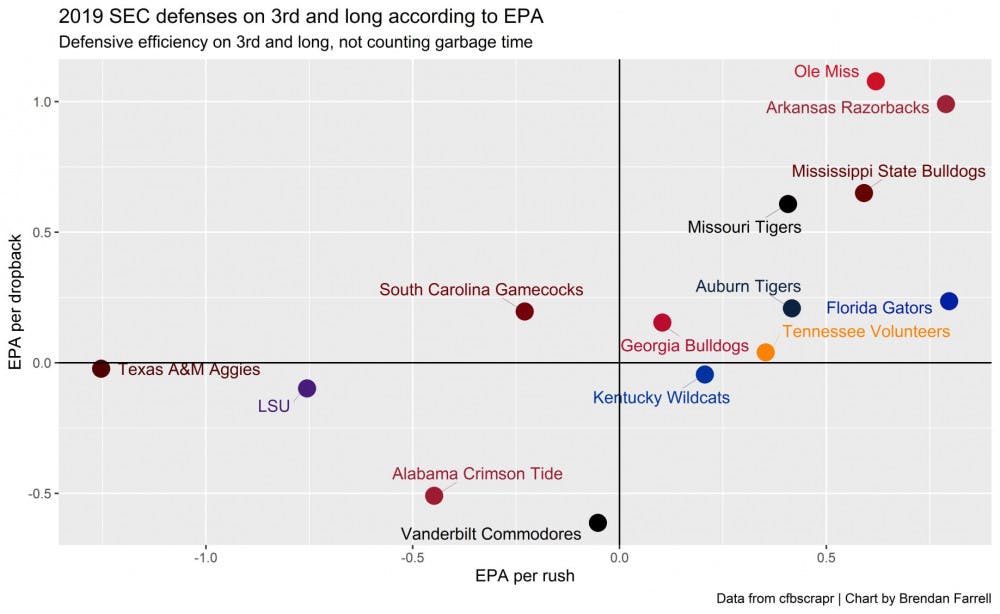
Basically, Florida gave up a lot on the ground and not as much through the air on third and long. I would chalk this up to opposing offenses having success running draw plays on third and long, especially in plus territory.
However, I would caution against making broad conclusions about the Gators’ defense based on this alone. Yes, the Gators’ run defense wasn’t great on third and long, but we’re also only looking at 12 running plays. That is a comically small sample size.
Let’s loosen up the restrictions on “Third and Grantham”, just for fun. Let’s look at any third down the Gators faced. They were 29th in the country in opposing third-down conversion percentage. That was a vast improvement from 2018 when they finished 77th. Let’s take a look at EPA again.
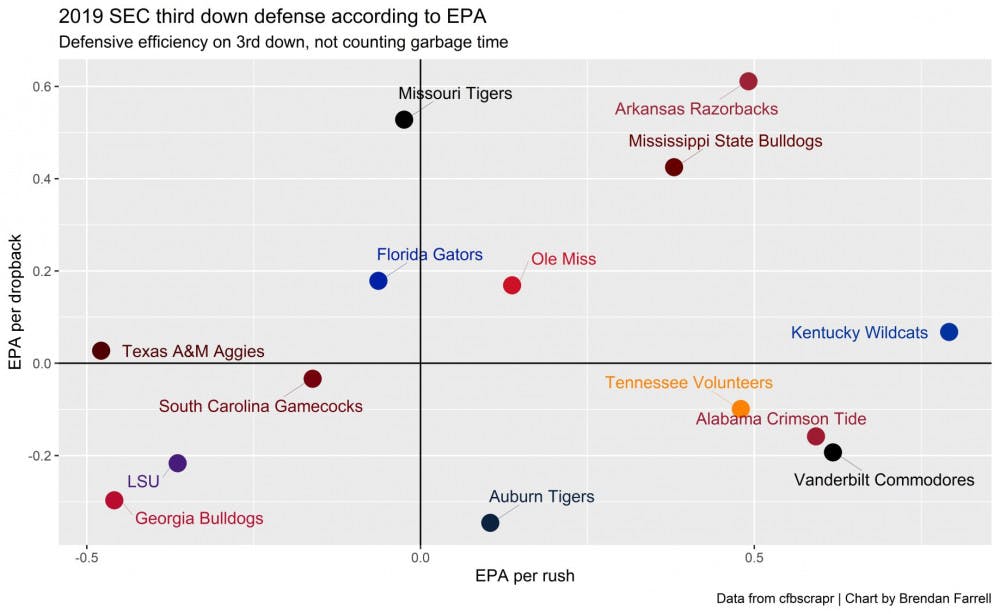
Florida’s defense was solid against the run and struggled a bit through the air. Overall, it was decent on third down, finishing 48th in the country in Total EPA per play.
I’m inclined to believe that the less-than-stellar performance on third and long is what sunk the Gators' third-down defense because they were very good on third and short.
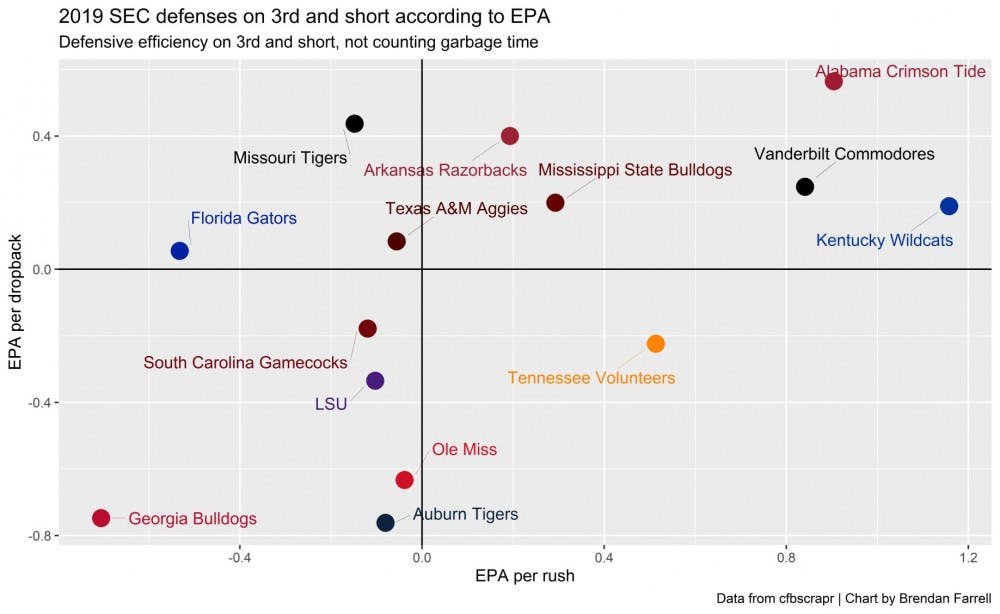
In 51 third-and-short situations, Florida’s opponents converted only 35 percent of the time, the third-best mark in the SEC and 21st in the country. The playcalling distribution was pretty even, with opponents running 22 running plays versus 18 dropbacks.
UF dominated opposing rushing offenses on third and short. Only Georgia and Oregon had better defenses against the run on third and short according to EPA. Florida’s pass defense wasn’t anything to write home about in these situations, but the defense was still very solid, finishing 14th in Total EPA per play.
Conclusions
If there’s anything that I learned out of this whole ordeal, it’s that defense on third down is finicky, and it’s difficult to figure out what to value. We’re looking at only a handful of plays out of an entire season’s worth of data, and some defenses are great on third and short and not so much on “Third and Grantham.”
Take a look at Clemson. The Tigers were 86th in the country in opponent third-down conversion on third and long, and they finished the season toward the top of pretty much every other defensive metric. Like the Gators, they were still solid on third and short, but you don’t hear anyone complain about Brent Venables. You could say the same thing about Penn State.
It goes both ways, too. Yes, Ohio State and Alabama were really good on third and long, but so were BYU, Western Kentucky and Florida Atlantic.
Generally, Florida was pretty decent on third down in terms of conversion percentages and EPA per play. They were vulnerable through the air because of their secondary and an injured pass rush.
It’s easier to figure out third downs with offenses because, ideally, you would try to have as few third downs as possible because you already moved the chains on first or second down. UF found that out first hand in its loss to LSU when the Tigers faced only four third downs all game while lighting up the Florida defense.
Defenses don’t have that luxury unless you think that forcing a turnover on first or second down is a repeatable process, which it’s not. The defense’s best option then is to try to limit the damage as much as possible.
The Gators’ defense on third and long is what it is. There are so many other factors pointing to UF’s defense being very good last season — like finishing seventh in ESPN’s SP+ on defense, seventh in points allowed per game and ninth in yards allowed per game — that make worrying about how Florida performed on third and long not that important.
Follow Brendan on Twitter @Bfarrell727 and contact him at bfarrell@alligator.org.


